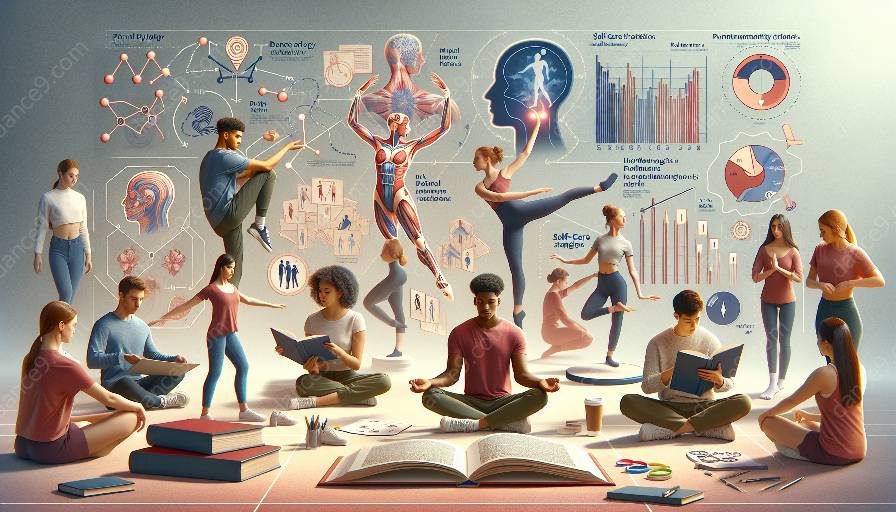As dancers face numerous challenges and setbacks, it's essential to cultivate resilience and mental toughness to maintain their physical and mental health. This article explores effective self-care strategies and the connection between physical and mental well-being in dance.
Understanding Resilience and Mental Toughness
Resilience refers to the ability to bounce back from adversity and navigate through challenges effectively. Mental toughness involves remaining determined and focused in the face of difficulties, enabling dancers to persevere despite setbacks.
Self-Care Strategies for Dancers
Dancers can enhance their resilience and mental toughness through various self-care strategies. Practices such as mindfulness, meditation, and maintaining a healthy work-life balance are crucial for managing stress and promoting mental well-being.
Furthermore, adequate rest, nutrition, and hydration play a significant role in supporting physical health, which in turn affects mental resilience. It's important for dancers to prioritize self-care to build a strong foundation for facing challenges.
Creative Expression and Emotional Release
Dance provides a unique avenue for creative expression and emotional release, allowing dancers to channel their emotions and thoughts through movement. This artistic outlet contributes to mental resilience and serves as a powerful tool for coping with setbacks.
The Intersection of Physical and Mental Health in Dance
Physical and mental health are deeply interconnected in the context of dance. Proper nutrition and strength training contribute to physical resilience, enabling dancers to withstand the physical demands of their art form.
Moreover, maintaining a positive mindset and seeking support from peers and mentors are vital for sustaining mental toughness. The mental and emotional challenges that dancers face are just as significant as the physical demands, emphasizing the need for a holistic approach to self-care.
Conclusion
Cultivating resilience and mental toughness is essential for dancers to navigate the challenges and setbacks they encounter. By embracing self-care strategies, nurturing emotional well-being through dance, and acknowledging the profound connection between physical and mental health, dancers can develop the resilience and mental toughness needed to thrive in their art form.


































